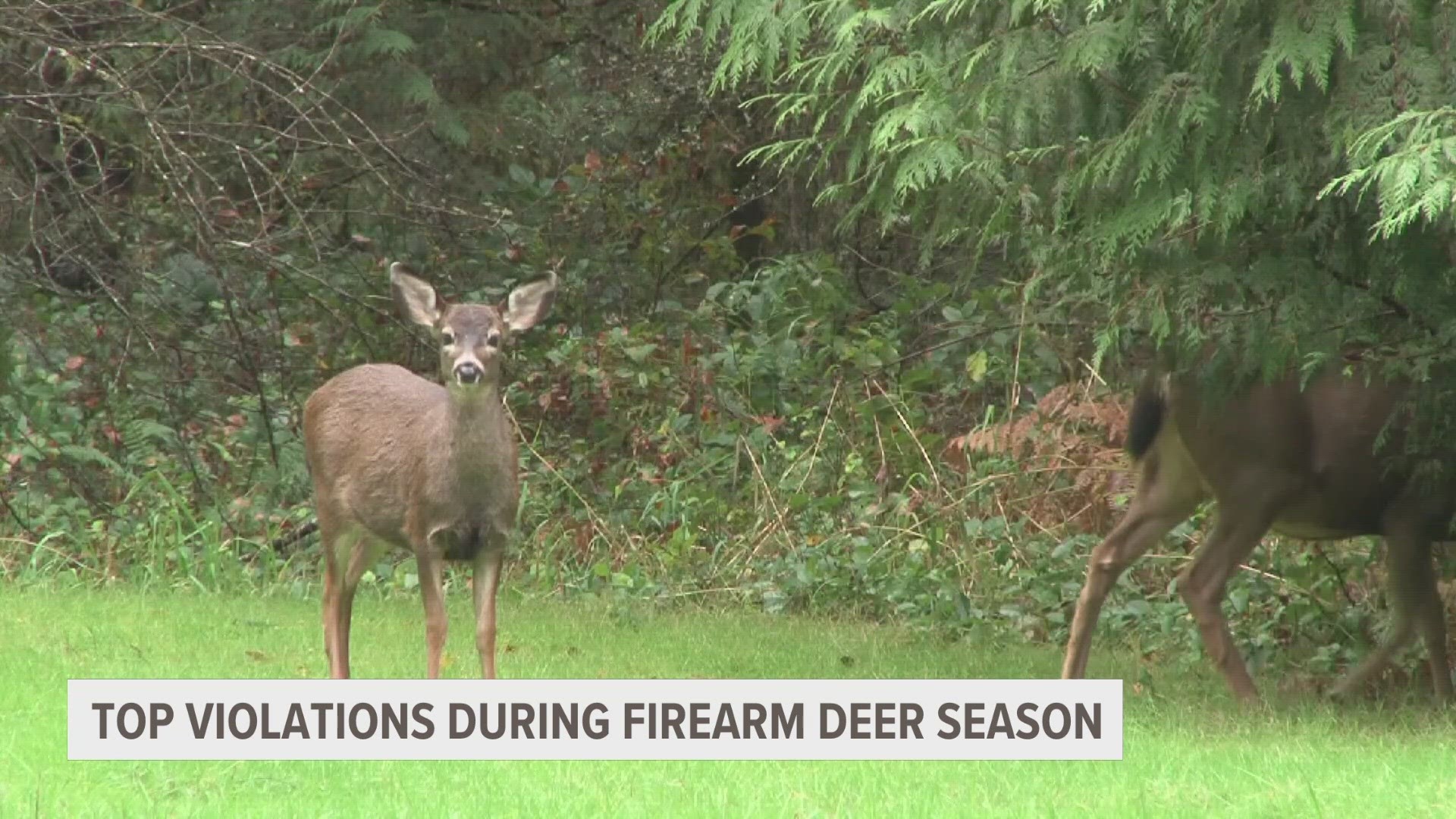MICHIGAN, USA — Regular firearm deer season begins Wednesday morning just before sunrise.
It follows bow season, which started several weeks ago on Oct. 1.
So far, the Michigan Department of Natural Resources said hunters harvested more than 83,000 deer.
Hunters are now required to report their harvest through the DNR website or using the mobile app. Hunters have several easy ways they can access the DNR's website. The first is by manually opening the website at michigan.gov/dnrharvestreport. In addition, hunters can find a QR code to bring them to the DNR website on each individual harvest tag. There is also a mobile app to make reporting quick and easy.
In West Michigan, bow hunters in Kent County took the most deer followed by Allegan, Ottawa and Muskegon counties respectively.
"If we didn't have hunters to manage them, you're going to see increases in deer collisions. you're going to see increases in crop damage, and you'll see changes in your forest," Chad Stewart, Deer, Elk and Moose Management Specialist for the Michigan Department of Natural Resources said.
"Because whitetail deer can eat anywhere between seven and eight pounds of forage every day, especially in the summertime. So when you think about what that looks like in terms of removing vegetation from the landscape, it can be very impactful very quickly."
Fewer Michiganders are hunting
Hunting is important to Michigan's economy. It generates about $2.8 billion a year.
But much like the rest of the country, the industry is on the decline.
In the year 2000, Michigan had 800,000 licensed hunters. Today, it's closer to 550,000.
The DNR says it does hold events to recruit new people to the sport, but it's difficult to keep up.
The DNR blames the decline in hunting on several factors, including increased academic pressures, more after-school activities and electronics like phones and video games.
If the current trend continues, the state anticipates losing an additional 100,000 hunters over the next decade.
Chronic Wasting Disease - 2023 Update
Chronic Wasting Disease (CWD) is a progressive, but very slow-moving disease that affects members of the deer family's central nervous system.
Within a year or two, deer that contract this disease can show symptoms like extreme emaciation, loss of neurological functioning and excessive drooling.
It's transmitted between deer.
"Overall, you know, there's concern that long term and when I say long term, I mean, like decades from now, CWD could have major population-level impacts to our white-tailed deer herd," Michigan DNR's Stewart said.
"Today, you know, you're not going to notice a whole lot of impacts to it because of how slow it moves and progresses within our area. But we do have locations north of Grand Rapids and northeastern Kent County and throughout like places like Montcalm County, that are the most impacted and widespread with CWD."
"So, if you are hunting in those areas, and are concerned about chronic wasting disease in your deer herd, we do have some testing options available for you. So the best place to do that is to visit our website."
Here are the counties that the state is focusing CWD testing efforts for the 2023 hunting seasons:
- Antrim
- Benzie
- Charlevoix
- Emmet
- Grand Traverse
- Hillsdale
- Isabella
- Kalkaska
- Lake
- Leelanau
- Manistee
- Midland
- Missaukee
- Osceola
- Wexford
Here is a list of counties Michigan officials previously detected CWD:
Upper Peninsula
- Dickinson
Lower Peninsula
- Clinton
- Eaton
- Gratiot
- Hillsdale
- Ingham
- Ionia
- Isabella
- Jackson
- Kent
- Midland
- Montcalm
- Ogemaw
►Make it easy to keep up to date with more stories like this. Download the 13 ON YOUR SIDE app now.
Have a news tip? Email news@13onyourside.com, visit our Facebook page or Twitter. Subscribe to our YouTube channel.

